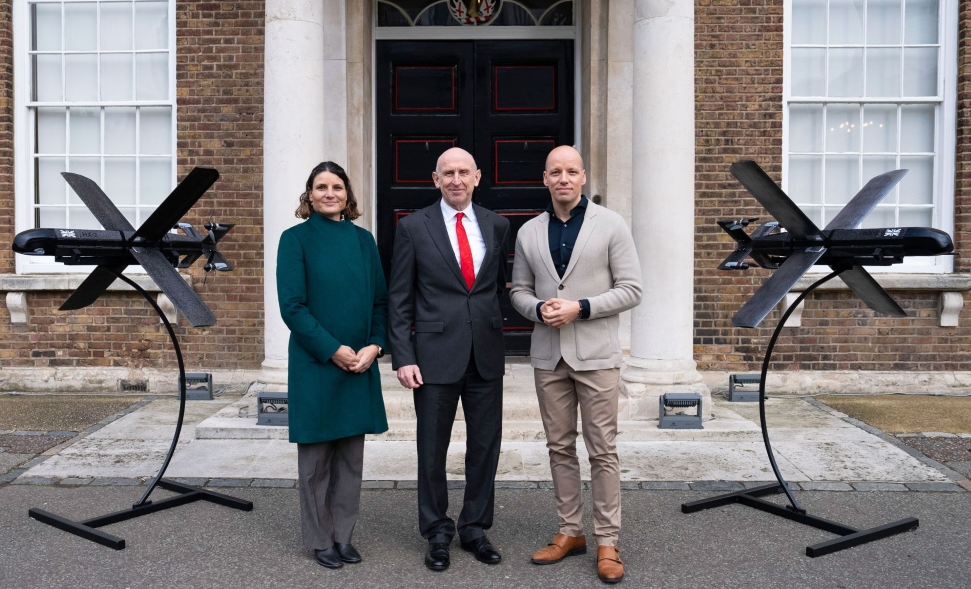
UK and UK-based defence firms “will be prioritised” for government investment under the new Defence Industrial Strategy that the new Labour government has launched, as promised in its political Manifesto.
The new Strategy should be published in the Spring when we also await the wider Strategic Defence Review and, probably later on, a Treasury announcement about the funding profile the MOD can expect for the next few years, on the way to the new 2.5% of GDP target for Defence expenditure.
Defence Secretary John Healey launched the new Strategy on Monday 2 December in front of an audience of investors, innovators, industry and trade unions in London. The ambition is to “increase defence sector jobs in every nation and region of the UK”.
The new Government in the “Statement of Intent” that launches the process to compile the new Strategy says that it will build on what the previous Industrial Strategy (published in 2021 by the Conservatives) “got right”, namely the scrapping “global competition by default”; the recognising of the defence sector as a "strategic resource"; simplifying contracts; making longer-term commitments; and providing clear signalling to encourage firms to take long-term investment decisions. It will also maintain the 2 categories from the 2021 paper where the UK needs to retain sovereign production capacities onshore: the “Strategic” category comprising of nuclear, submarines, cyber and crypt key; and the "Operational Independence" category, including complex weapons, novel weapons, shipbuilding, test and evaluation and CBRN.
The aim is to develop a faster, more resilient supply chain and the government “wants to send a clear market signal to the private sector about our preference to grow onshore production capability”. In this the government mentions its decision to acquire Octric Semiconductors to nationalize and safeguard a critical supplier of high tech semiconductor products, as well as the re-birth of the ability to forge and produce artillery barrels in the UK thanks to Sheffield Forgemasters and Rheinmetall, the latter company having committed to opening a factory for final manufacture of 120 and 155 mm barrels. This was most likely already coming through the previous government’s “Ammunition Strategy”, however.
The new government has chosen not to rescue Harland & Wolff and Reaction Engines earlier this year, although it might soon announce, reportedly before the Christmas recess of Parliament, a new deal with Navantia that will see the Spanish firm take ownership of all 4 shipyard affected. The government also said it is “in contact” with the administrators over Reaction Engine’s case. As part of the Strategy writing, a “first-of-its-kind” wargame has been started, involving UK defence industry, to explore how industry and the MOD could sustain personnel on the frontline when faced with constant supply chain disruption during an intense conflict.
The new government believes that the previous Administration did not properly build on its pledge to spend £6.6bn on Defence R&D, saying that “pull-through from research into capabilities that our forces can deploy hasn’t occurred in a meaningful way”. This is, included with an alleged “strategic incoherence” and “inefficient spending” is said to hold back the sector, as “few grant winners go on to receive larger awards; the number of successful spin-outs is low; and the MOD often sits on the intellectual property (IP) generated without using it”.
The government also feels that the UK has “fallen behind in exporting”, which might be true under some metrics but will be a tough act to improve upon when considering the previous administrations managed to set up AUKUS, GCAP, export Typhoon to Qatar, Type 26 to Australia and Canada and Type 31 to Poland and Indonesia as well as CAMM and BRIMSTONE missiles to Poland (PILICA+ and NAREW and the Army’s anti-tank requirement). It is true however that the new government inherits 4 open priority export campaigns with discussions ongoing with 4 potential Middle East customers for AJAX, FOXHOUND and BOXER (Saudi Arabia and Qatar are “known”, the others not yet), open discussions with Norway for Type 26 (shortlisted, final decision due in 2025), ongoing Typhoon-centred discussions with Turkey, Qatar and Saudi Arabia and the possible entry again of Saudi Arabia into GCAP as well as a planned but not yet finalized polish order for AW101 helicopters. All these opportunities are already on the table and some of the discussions will conclude soon.
At the public launch, the Defence Secretary could in particular announce some major investments from BAE Systems, Babcock and Rolls Royce, primarily due to AUKUS, as well as from Helsing (pictured), Europe’s largest defence AI company, which has chosen the UK as base where to mass-produce “thousands” of a new AI-enabled drones, as part of a £350 million investment over the next five years. The main drone in question here is the HX-2 loitering munition, which was displayed at the London event, which will be produced for Ukraine with the backing of the International Fund and which is also targeting the British Army’s own requirement, published in October, for a “Medium Range Precision Strike” portable munition.
Official figures show that the defence sector already supports 1 in 60 jobs in the UK: some 434,000 high quality positions with the majority (67%) outside London and the Southeast.








.png)
